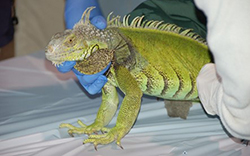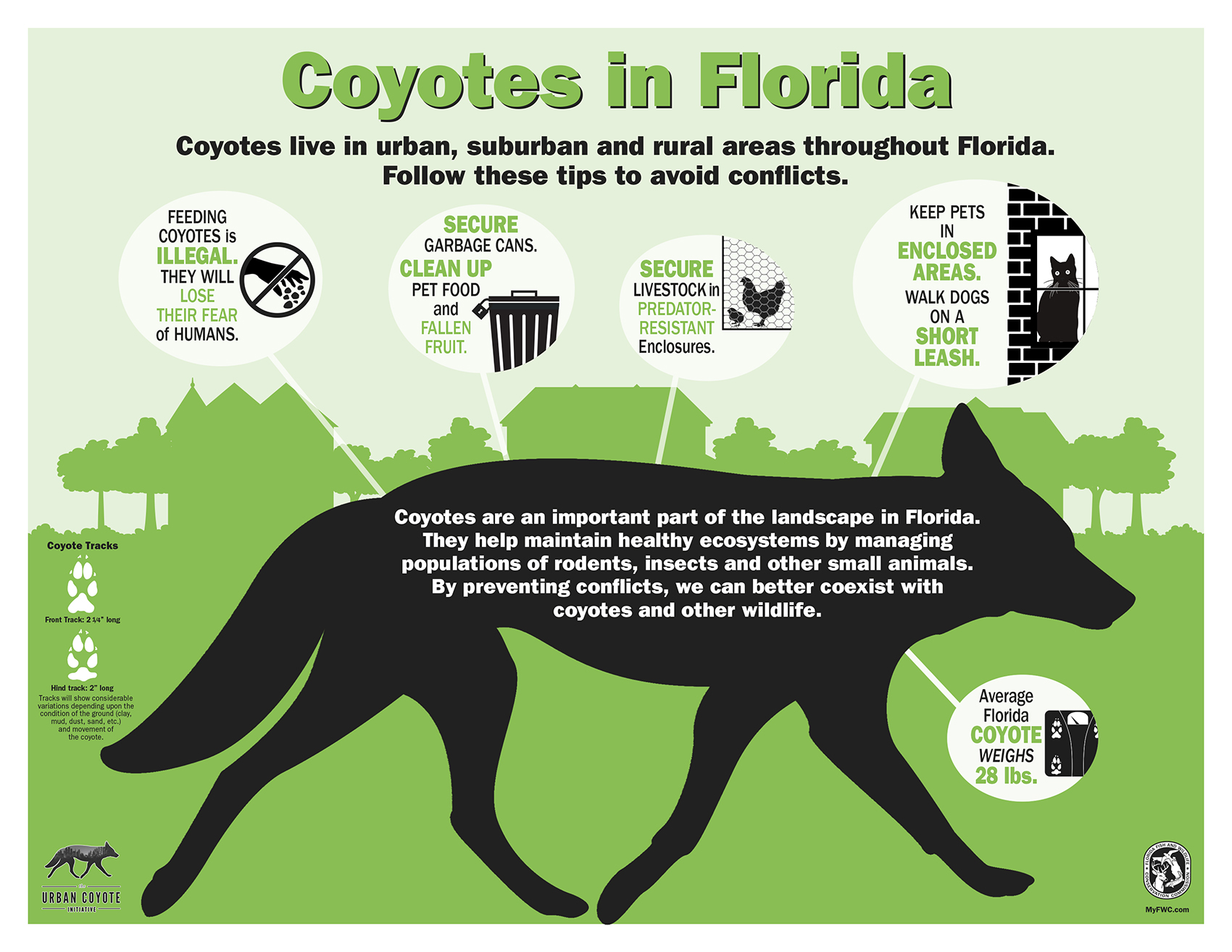

Deerfield-News.com -Deerfield Beach, Fl-One of our two most-read stories about animals was certainly controversial when the Florida Wildlife Commission told citizens to kill iguanas where they found them. This lead to an “OK Corral” mentality and caused some to become injured trying to shoot and kill iguanas. The other top-read story had to do with coyotes being found in all areas of Deerfield Beach.
Deerfield-News.com-Deerfield Beach, Fl-In case you missed the top story it is FWC issues directive allowing property owners to kill Iguanas, whenever possible. Again, this was information the FWC put out this week that national new media has covered.
Those invasive non-native nuisance Iguanas FWC says require no permit to kill. In fact, they seem to encourage property owners to do just that. We certainly have noticed the proliferation in recent years in Deerfield Beach. We know of some areas at Quiet Waters Park that flat out is infested with iguanas. We have seen many in CVE over recent years as well as all around town in Deerfield. Some of these suckers are the size of gators.
The iguana removal industry has flourished in South Florida in recent years as these critters can burrow and cause structural damage. Just do a simple Google search on Iguana removal or iguana control see how many results pop up.
Here is what the FWC says about iguanas.-
Green Iguana (Iguana iguana) – INVASIVE SPECIES
Regulatory Status
Green iguanas are not native to Florida and are considered to be an invasive species due to the damage they can cause to seawalls, sidewalks, and landscape plants. This species is not protected in Florida expect by anti-cruelty law. Homeowners do not need a permit to kill iguanas on their own property, and the FWC encourages homeowners to kill green iguanas on their own property whenever possible. Iguanas can also be killed year-round and without a permit on 22 public lands in south Florida.
Captive held iguanas are regulated as Class III wildlife in the State of Florida. A permit is not required to possess green iguanas as personal pets. However, a License to Possess Class III Wildlife for Exhibition or Public Sale must be obtained to possess these reptiles for commercial use and a Captive Wildlife Importation Permit is required to import this species into the state.
Description

The green iguana (Iguana iguana) is a large lizard that is green to brown to almost black in color, although they usually remain predominantly green as they mature. Some adults can take on an orange or pink coloration during certain times of the year. Hatchling and young green iguanas usually have bright green coloration.
Green iguanas have a row of spikes down the center of the neck, back, and upper portion of the tail, and have dark black rings on the tail. Mature male iguanas develop heavy jowls and a throat fan (or dewlap) that are much larger than those of female iguanas. Larger throat fans can make male iguanas appear bigger, repel rivals, or warn predators. Female iguanas may choose to breed with male iguanas that have larger dewlaps. The throat fan can also help iguanas regulate body temperature.
 Male green iguanas can grow to over 5 feet in length and weigh up to 17 pounds. Females reach lengths similar to those of males, but usually do not exceed 7 pounds. Females typically reach reproductive maturity at two to four years of age. Green iguanas typically mate in October through November in their native range, and nesting occurs on riverbanks, beaches and other sandy areas. Females dig egg chambers that may contain nearly 80 feet of interconnected tunnels and multiple entrances and lay clutches of anywhere from 14-76 eggs. Green iguanas can live up to 10 years in the wild and 19 years in captivity.Green iguanas can live on the ground, in shrubs, or in trees in a variety of habitats including suburban developments, urban areas, small towns, and agricultural areas. Green iguanas are excellent swimmers and tolerate both salt and freshwater. They can submerge themselves for up to 4 hours at a time.
Male green iguanas can grow to over 5 feet in length and weigh up to 17 pounds. Females reach lengths similar to those of males, but usually do not exceed 7 pounds. Females typically reach reproductive maturity at two to four years of age. Green iguanas typically mate in October through November in their native range, and nesting occurs on riverbanks, beaches and other sandy areas. Females dig egg chambers that may contain nearly 80 feet of interconnected tunnels and multiple entrances and lay clutches of anywhere from 14-76 eggs. Green iguanas can live up to 10 years in the wild and 19 years in captivity.Green iguanas can live on the ground, in shrubs, or in trees in a variety of habitats including suburban developments, urban areas, small towns, and agricultural areas. Green iguanas are excellent swimmers and tolerate both salt and freshwater. They can submerge themselves for up to 4 hours at a time.
Diet
Green iguanas feed on a wide variety of vegetation, including shoots, leaves, blossoms and fruits of plants such as nickerbean, firebush, jasmine, orchids, roses, Washington fan palms, hibiscuses, garden greens, squashes and melons. Adult green iguanas can also feed on bird eggs and dead animals. Juvenile green iguanas feed on vegetation, insects and tree snails.
Native Range
 The native range of green iguanas extends from Central America to the tropical parts of South America and some eastern Caribbean islands.
The native range of green iguanas extends from Central America to the tropical parts of South America and some eastern Caribbean islands.
Florida Distribution
Green iguanas were first reported in Florida in the 1960s in Hialeah, Coral Gables and Key Biscayne along Miami-Dade County’s southeastern coast. Green iguana populations now stretch along the Atlantic Coast in Broward, Martin, Miami-Dade, Monroe and Palm Beach Counties and along the Gulf Coast in Collier and Lee Counties. There have also been reports as far north as Alachua, Highlands, Hillsborough, Indian River and St. Lucie Counties. However, individuals observed in more northern counties are likely escaped or released captive animals and are unlikely to establish populations, as iguanas are not cold hardy. In cleared habitats such as canal banks and vacant lots, green iguanas reside in burrows, culverts, drainage pipes and rock or debris piles. South Florida’s extensive man-made canals serve as ideal dispersal corridors to further allow iguanas to colonize new areas.
IGUANA SIGHTINGS
Visit IveGot1.org for a map of credible iguana sightings.
Potential Impacts
Green iguanas can cause damage to residential and commercial landscape vegetation, and are often considered a nuisance by property owners. Iguanas are attracted to trees with foliage or flowers, most fruits (except citrus) and almost any vegetable. Some green iguanas cause damage to infrastructure by digging burrows that erode and collapse sidewalks, foundations, seawalls, berms and canal banks. Green iguanas may also leave droppings on docks, moored boats, seawalls, porches, decks, pool platforms and inside swimming pools. Although primarily herbivores, researchers found the remains of tree snails in the stomachs of green iguanas in Bill Baggs Cape Florida State Park, suggesting that iguanas could present a threat to native and endangered species of tree snails. In Bahia Honda State Park, green iguanas have consumed nickerbean, which is a host plant of the endangered Miami Blue butterfly. As is the case with other reptiles, green iguanas can also transmit the infectious bacterium Salmonella to humans through contact with water or surfaces contaminated by their feces.
Deerfield-News.com-Deerfield Beach, Fl-Many on the site Nextdoor.com have again been reporting coyote sightings across Deerfield Beach. Some in Crystal Lake believe the new construction on the golf course is to blame for the additional sightings as coyote habitats are being destroyed. Throughout the city from east to west, all neighborhoods are likely to have coyotes. Many residents say they can hear them at night. One thing is certain sightings are on the rise in Deerfield Beach. We have been covering this subject since readers started to email us over a year ago. Here is what the FWC says to do if you encounter coyotes.

Living with Coyotes
Coyotes are found throughout Florida. According to a 2007 FWC report, the presence of coyotes has been documented in all 67 Florida counties. Coyotes arrived in Florida as part of natural range expansion from western states; they now live in every state but Hawaii. This medium-sized canine, a close relative of the domestic dog, is extremely adaptable and can be found in rural, suburban and urban landscapes. They are typically shy and elusive but encounters between people and coyotes in Florida are occurring more often.
Coyotes help maintain balanced ecosystems by controlling the populations of rodents and smaller predators, such as foxes, opossums and raccoons, which naturally occur in higher densities and can quickly overpopulate areas of habitat. Coyotes are native to North America, have been in Florida for many years, and will continue to make their homes around the state.
Coyotes in Florida: Here to Stay
Removing coyotes for the purpose of eradication is an inefficient and ineffective method to control populations. New coyotes move into areas where others have been removed. Removal activities such as hunting and trapping place pressure on coyote populations, and the species responds by reproducing at a younger age and producing more pups per litter; populations can quickly return to their original size.
Coyotes are in Florida due to natural range expansion from western states. Coyotes now live in every state but Hawaii. Visit the FWC Coyote Species Profile for additional information about coyote biology.
How to Haze Coyotes
This short, educational video discusses how to effectively “haze” or deter coyotes. Coyotes in urban areas may learn to tolerate human presence instead of fleeing. Hazing is the process of disturbing an animal’s sense of security so it leaves an area or otherwise changes its behavior. Methods of hazing may include the use of audible, visual or physical devices or actions to cause the desired reaction.
Coyotes are not large animals and rarely pose a threat to people, especially adults. They can be curious but are also timid and generally run away if challenged. If a coyote approaches too closely, there are methods you can use to deter it and frighten it away. Hazing the animal by making loud noises and acting aggressively will typically cause a coyote to leave an area, but you may need to increase and continue hazing efforts until the coyote is effectively deterred and leaves the area for good. There are several methods of hazing that are effective with coyotes.
Prevent Problems with Coyotes
Never feed coyotes either intentionally or unintentionally. This includes placing food outside to attract wildlife. Clean up pet food, fallen fruit and seed around bird feeders – coyotes are opportunistic feeders and will be drawn to and eat all of these potential food sources. Secure garbage cans and secure compost. Close off crawl spaces under porches and sheds to prevent coyotes and other animals from resting or raising their young in areas around your home. Educate your neighbors and ask them to follow these same steps.
FWC can help educate your community about coyotes. Contact your FWC Regional Office to request coyote outreach.
Coyotes that associate places where people live as an easy place to find food may gradually lose their natural fear of humans. Be aware of unusual coyote behavior. Unusual behavior could include a coyote that has lost its fear of humans and is approaching people, chasing joggers and bikers, or attacking leashed pets. Unusual coyote behavior can be reported to your nearest FWC Regional Office.
Coyotes can and do prey on domestic cats and small dogs. Most coyote attacks on pets occur either at night or in the early evening or morning hours (dusk and dawn). To protect your pets, do not allow them to roam freely. Keep cats indoors. Free-roaming cats are at a high risk of being preyed on by coyotes and other animals. Walk small dogs on a short leash that is less than six feet, especially at night, dusk or dawn. Be extra careful if you are going to walk your pet in wooded areas or areas that have heavy foliage, where coyotes may rest.
Spanish Language Resource: Proteja a su Mascota de los Osos Negros y los Coyotes

- Feeding Coyotes is illegal. They will lose their fear of humans.
- Secure garbage cans. Clean up pet food and fallen fruit.
- Secure livestock in predator-resistant enclosures.
- Keep pets in enclosed areas. Walk dogs on a short leash.
Coyotes are an important part of the landscape in Florida. They help maintain healthy ecosystems by managing populations of rodents, insects and other small animals. By preventing conflicts, we can better exist with coyotes and other wildlife.
The average Florida coyote weighs about 28 pounds and has a paw track about 2 inches long.
This infographic was developed with assistance from the Urban Coyote Initiative.


































